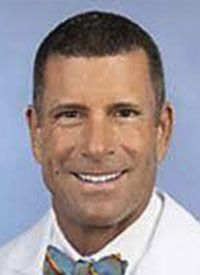Article
Socioeconomic Disparities Associated With Worse OS in Head and Neck Cutaneous Soft Tissue Sarcoma
Author(s):
R. Lor Randall, MD, FACS, discusses how disparities may lead to worse outcomes for patients diagnosed with head and neck cutaneous soft tissue sarcomas.
R. Lor Randall, MD, FACS

Disparities across sex, racial, and ethnic groups were associated with lower overall survival (OS) in patients with head and neck cutaneous soft tissue sarcoma, according to an analysis published in the Journal of Clinical Medicine.
Data analyzed from 4,253 patients with head and neck cutaneous soft tissue sarcoma pulled from the Surveillance, Epidemiology and End Result (SEER) database between 2000 and 2018 showed that males were 5.37 times more likely and non-Hispanic White people were 4.62 times more likely to be diagnosed with the disease compared with females and non-Hispanic Black people. Furthermore, patients with lower socioeconomic status experienced worse OS outcomes.
Along with poorer outcomes for patients with lower socioeconomic status, these underserved patient populations also struggle to gain access to clinical trials at similar rates as other populations, according to R. Lor Randall, MD, FACS.
“Clinical trial access is a burning platform. It is fair to say that those patients with lower socioeconomic status are less likely to be involved in clinical trials. We’ve seen that sarcomas in general and other oncology areas have similar issues,” said Randall, who was a co-author on the study. “We need to look at the results of these working groups to figure out how we can better enable access to clinical trials for patients of lower socioeconomic status.”
In an interview with OncLive®, Randall, the David Linn Endowed chair for Orthopedic Surgery, the chair for the Department of Orthopedic Surgery, and a professor in the Department of Orthopedic Surgery at University of California Davis Health, discussed how disparities may lead to worse outcomes for patients diagnosed with head and neck cutaneous soft tissue sarcomas.
OncLive®: What inspired this research in head and neck cutaneous soft tissue sarcomas?
Randall: Sarcoma Services at UC Davis [are comprised of] a transdisciplinary, trans-departmental effort. We work across all the different areas of expertise: orthopedic, orthopedic oncology, surgical oncology, ear, nose, and throat oncology, medical and pediatric oncology, radiation therapy, and more.
[These departments] convene in a variety of forums, and this is an academic endeavor. We wanted to try to answer questions surrounding socioeconomic disparities in head and neck cutaneous soft tissue sarcomas. The reason we chose this specific disease is because all the aforementioned disciplines manage this disease.
We as orthopedic oncologists at UC Davis will manage some of the head and neck cutaneous soft tissue sarcomas, along with our ear, nose, and throat oncologists and some of our general surgical oncologists. We believed that this was a common watershed area of interest to bring us together. We wanted to drill down on socioeconomic disparities in survival from these sarcomas.
What findings were reported when examining socioeconomic status in relation to the diagnosis and treatment of head and neck cutaneous soft tissue sarcomas?
One interesting thing is that there is an increasing trend of diagnosed cases of cutaneous soft tissue sarcomas of the head and neck. The [rate of] cutaneous soft tissue sarcomas of the head and neck increased throughout this study period, which was from 2000 to 2018.
We also found that survivorship was adversely prognosticated based upon decreasing socioeconomic disparities when looking at the SEER database. Those patients in the SEER database that were of lower socioeconomic status tended to do less well when compared with those who had [access to] more resources.
There was an increased incidence of the disease in men and White patients. Could you expand on this finding?
Non-Hispanic White patients were 4.62 times more likely compared with females and non-Hispanic Black patients to develop [head and neck cutaneous soft tissue sarcomas] over the course of the study.
We ensured that these patients were diagnosed with sarcomas, rather than melanomas. However, with any large database, [there are concerns] of a bleed effect or crossover.
Non-Hispanic White patients do have a relatively increased incidence of skin cancers. We wouldn’t think sarcomas would fall into that. However, [these findings] do raise the question of [whether the increased rates of head and neck cutaneous soft tissue sarcomas] may have to do with the sensitivity of non-Hispanic Whites to sun exposure and some things that may affect their skin.
What can be done on a clinical level to reduce socioeconomic disparities?
At UC Davis, we are carefully looking at this. We have some working groups to attempt to drill down on access issues, cultural issues, and a variety of other resource issues. We are forming kindred analysis with patients. We’re speaking with them or their supportive care provider, [conducting] some qualitative research analyses. We ask them about why they are having trouble either accessing care or being able to receive care. We’re just starting to drill into that, but that’s how we’re approaching it at our institution.
Is there anything else that you would like to emphasize about this specific study?
This study is a nice example of transdisciplinary collaboration to address some common concerns. There are some real limits to these large population databases because of [the uncertainty of] the accuracy of some of the recordings. However, this study sheds light on what we’re seeing across multiple domains in oncology and health care in general, which is that socioeconomic status is predictive of poorer outcomes.
Reference
Jawad MU, Zeitlinger LN, Bewley AF, et al. Head and neck cutaneous soft-tissue sarcoma demonstrate sex and racial/ethnic disparities in incidence and socioeconomic disparities in survival. J Clin Med. 2022;11(18):5475. doi:10.3390/jcm11185475









